Advatronix Nimbus 400 File Server Review
by Ganesh T S on August 12, 2015 8:00 AM EST- Posted in
- NAS
- storage server
- Avoton
- Advatronix
NAS Performance - SPEC SFS 2014
Evaluation of the system as a storage node on the network can be done using multiple approaches. As a simple NAS accessed from a single client, Intel NASPT would work very well. There are other artificial benchmarking programs such as IOMeter and IOZone (all of which are used in our dedicated NAS reviews). However, when it comes to file servers used in business scenarios, business metrics make more sense. For example, a database administrator might wonder how many simultaneous databases could be sustained on a given machine? An administrator in a software company might want to know how many simultaneous software builds could be processed on the machine if it were to be used as a storage node. SPEC SFS 2014 allows us to evaluate systems based on such business metrics.
Prior to discussing about the various business scenarios, let us take a look at the test setup (including details of the testbed and how the file server itself was configured.
Solution Under Test Bill of Materials
- Advatronix Nimbus 400 (ASRock Rack C2550D4I with 16GB RAM)
- AnandTech NAS Testbed (64GB RAM, 1GB to each member VM)
- Netgear GSM7352S Ethernet Switch
Component Software
- Advatronix Nimbus 400 system running Windows Server 2012 R2 Essentials
- Load generators running on AnandTech NAS Testbed (10x Windows 7 VMs in a Windows Server 2008 R2 Hyper-V Installation)
Storage and File-Systems
- Advatronix Nimbus 400 - 4x OCZ Vector 128GB SSDs : Storage Spaces with Parity Space
- AnandTech NAS Testbed - NTFS partitions created at OS install time on OCZ Vertex 4 64GB SSDs
Transport Configuration
- Advatronix Nimbus 400 - 2x 1GbE LAN Ports in 802.11ad LACP to Netgear GSM7352S
- AnandTech NAS Testbed - 11x 1GbE LAN Ports to Netgear GSM7352S (1x management, 1x to each of 10 VMs)
- All SMB benchmark traffic flowed through the Netgear GSM7352S network switch
The four business metrics that we will be looking at today include:
- Database
- Software Build
- Video Data Acquisition (VDA)
- Virtual Desktop Infrastructure (VDI)
The database and software build categories are self-explanatory. The VDA profile refers to usage of a storage node as a recording target for streaming video (usually from IP cameras). The VDI profile refers to the number of virtual desktops / virtual machines that can be supported using the file server as a storage node for the virtualization infrastructure.
Database
The following graphs show the requested and achieved op rates for the database workload. Note that beyond four databases, the gap between them is more than 10% - this automatically means that the storage system is unable to support more than four databases concurrently. In all the workloads, it is the latency which decides the suitability and not the bandwidth available.
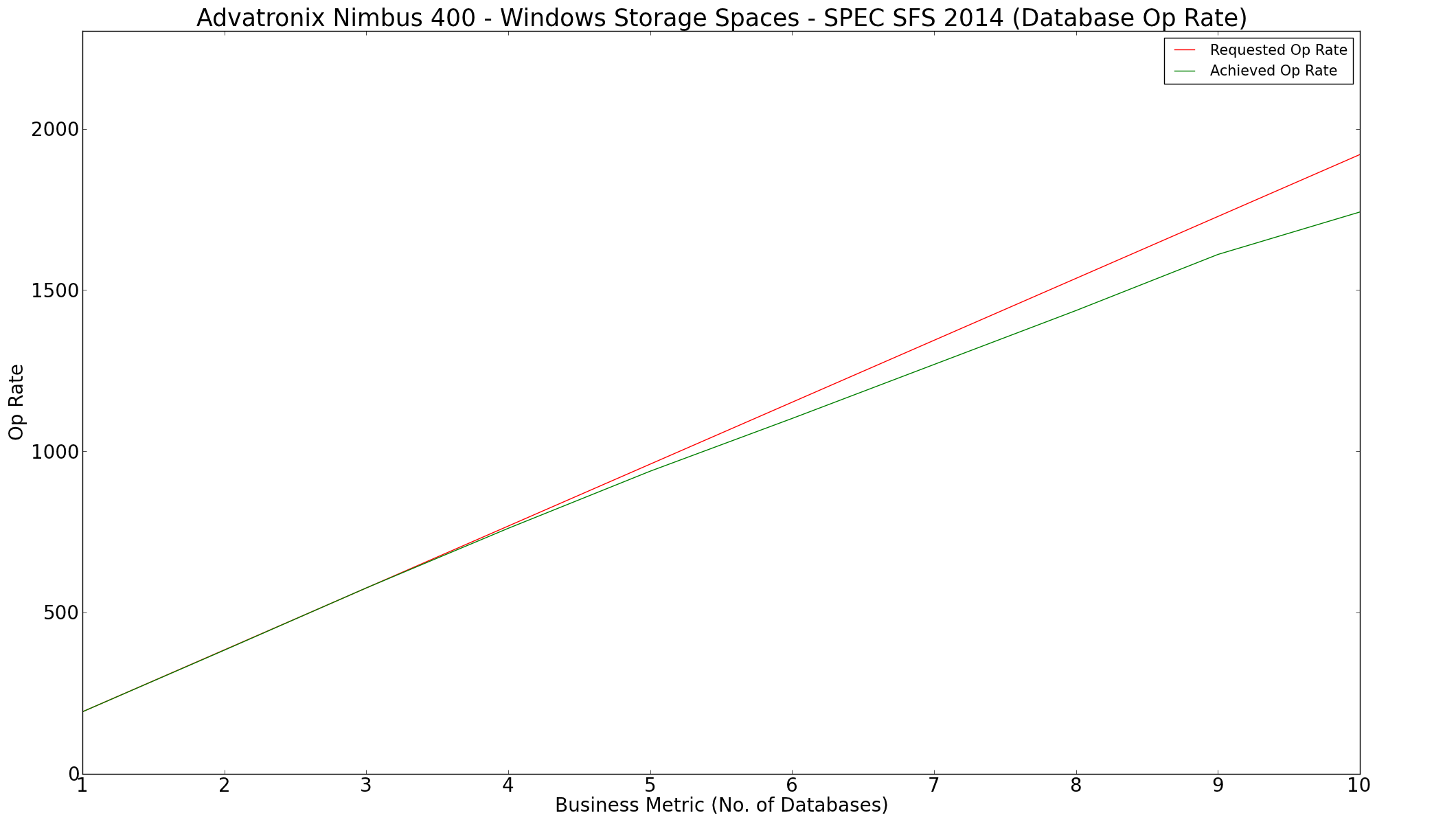
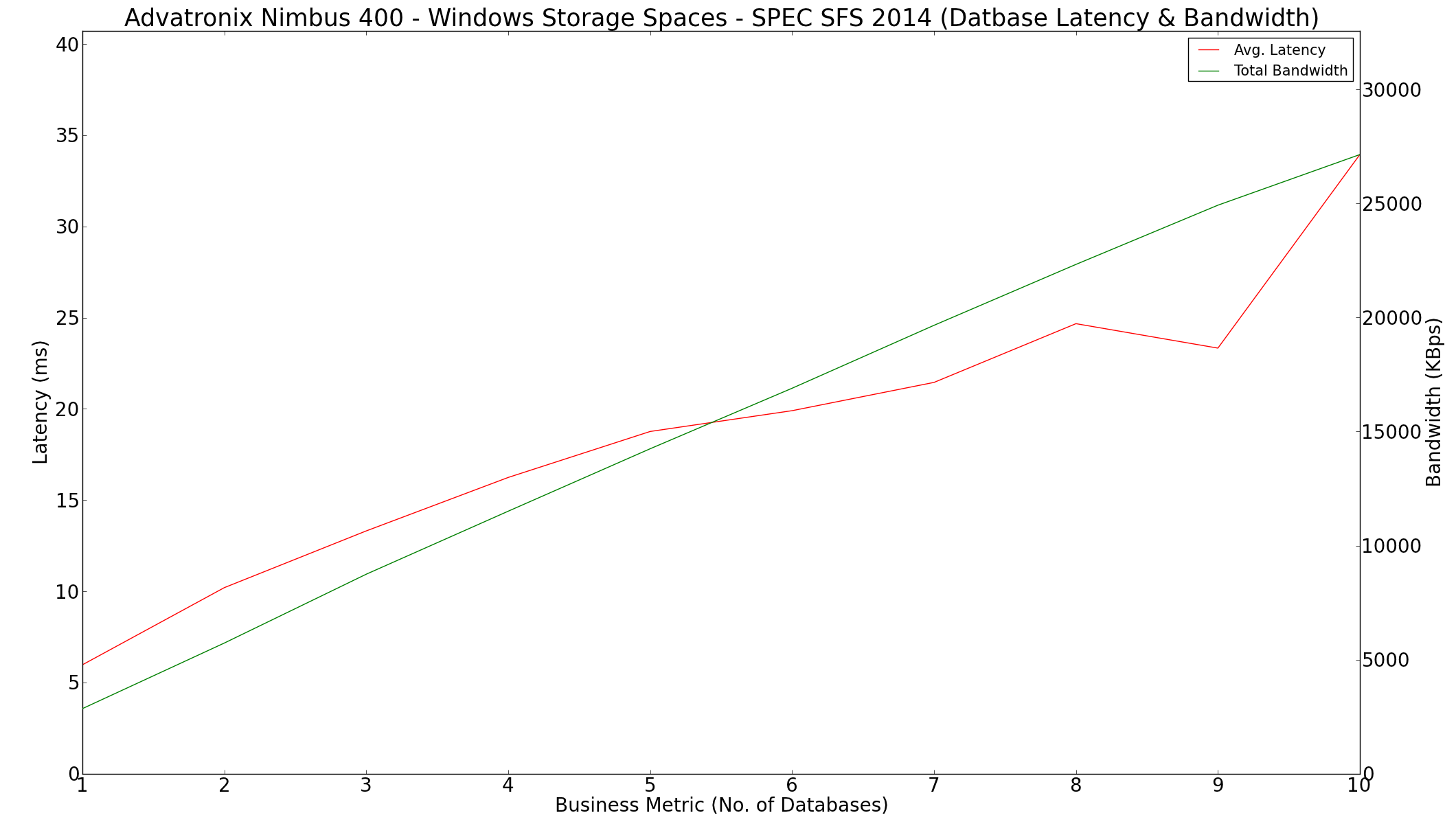
The SPEC SFS 2014 benchmark also provides a summary file for each workload which contains data additional to whatever is graphed above. The summary for the database workload is available here
Software Build
The software build workload simulations suggest that handling more than 7 concurrent software builds off the NAS would not be a good experince,
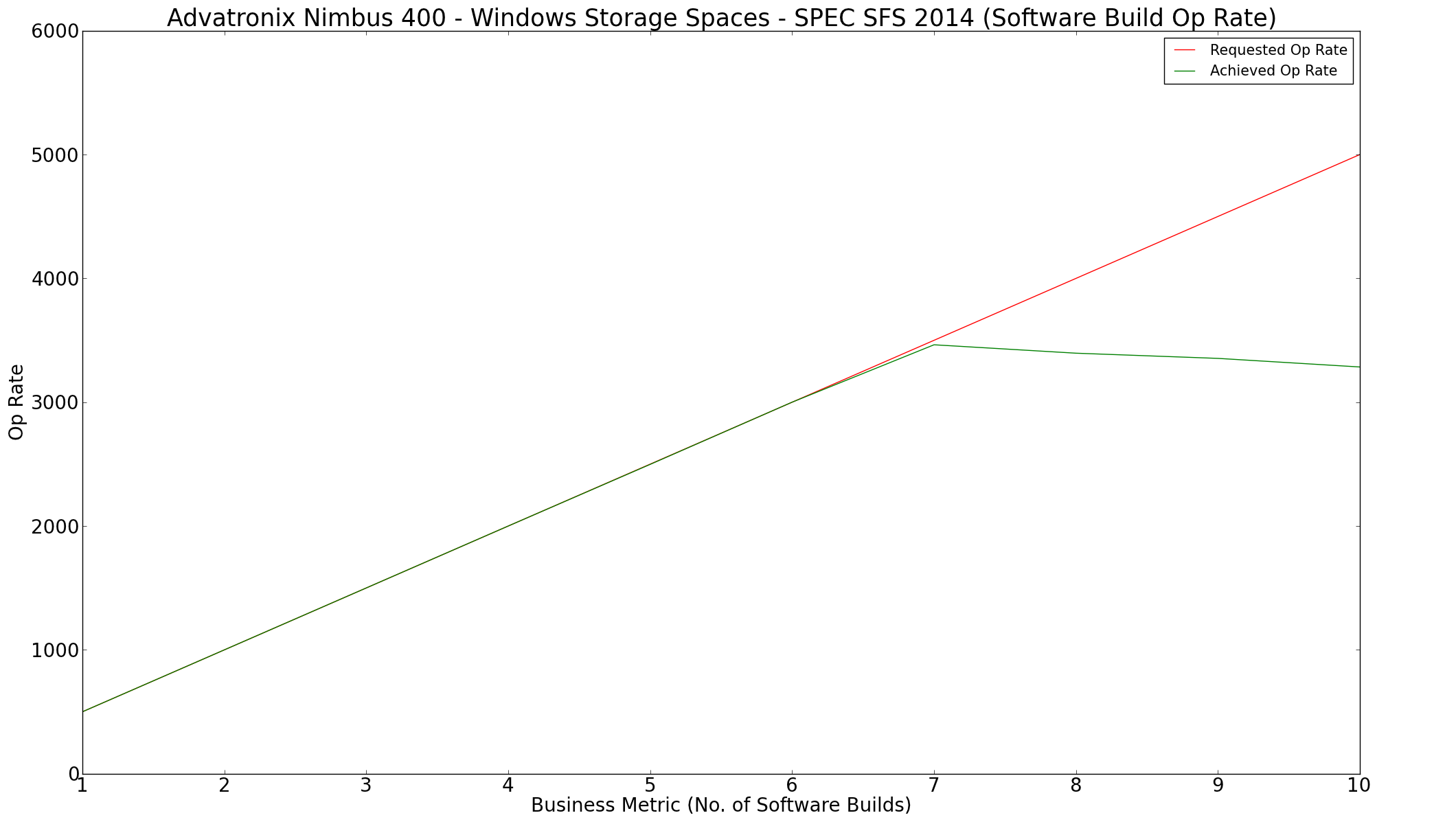
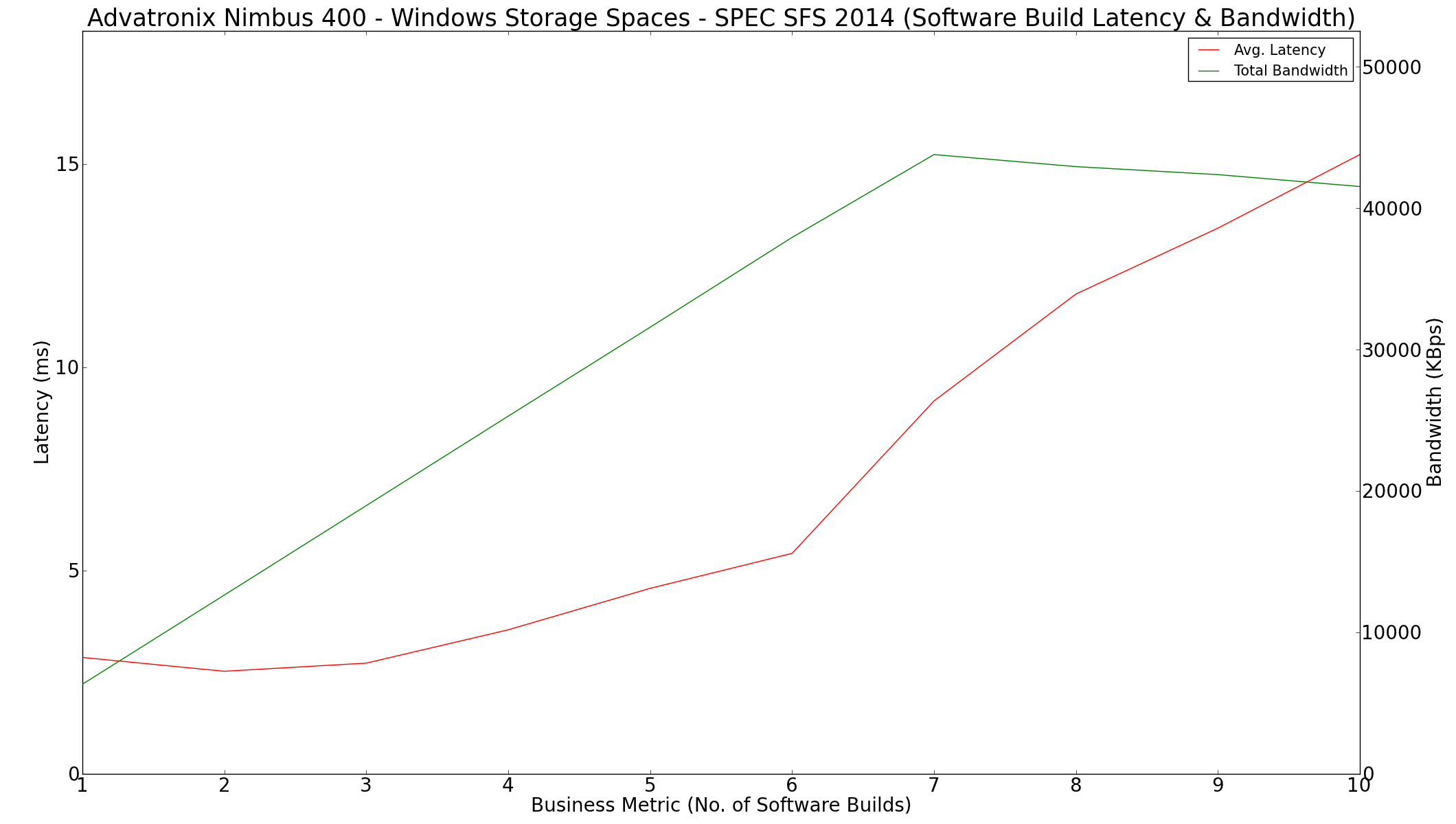
The report summary for the software build workload is available here
Video Data Acquisition
The Advatronix Nimbus 400 has no trouble with handling up to 10 data sources in the video data acquisition benchmark profile.

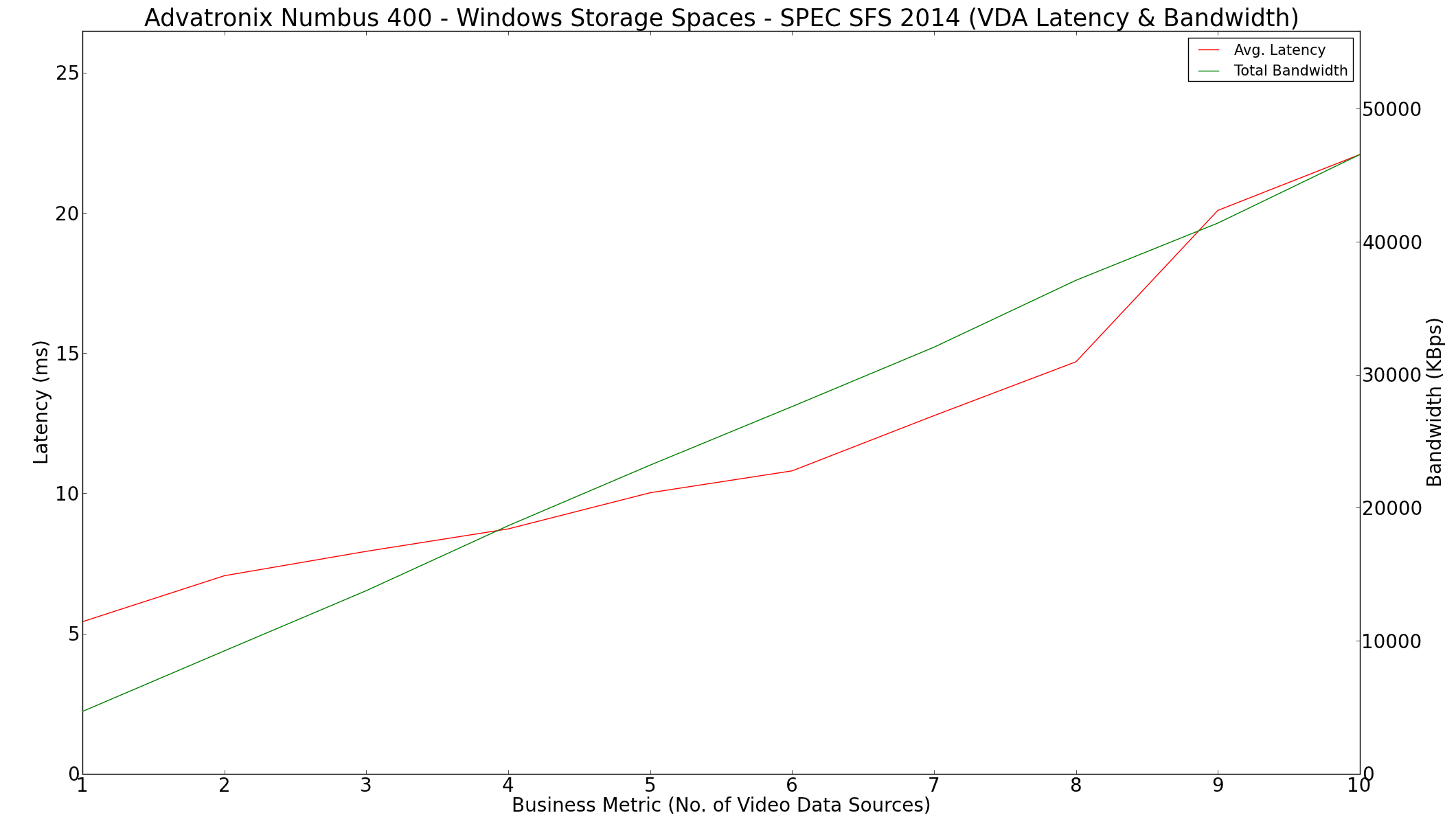
The report summary for the VDA workload is available here
Virtual Desktop Infrastructure
VDI again presents a big challenge. While the 8-bay U-NAS build could not handle even one virtual desktop, the Nimbus 400 starts off OK. However using a Windows Storage Spaces volume for VM data store proves to be a stumbling block when attempting to run two or more virtual machines.

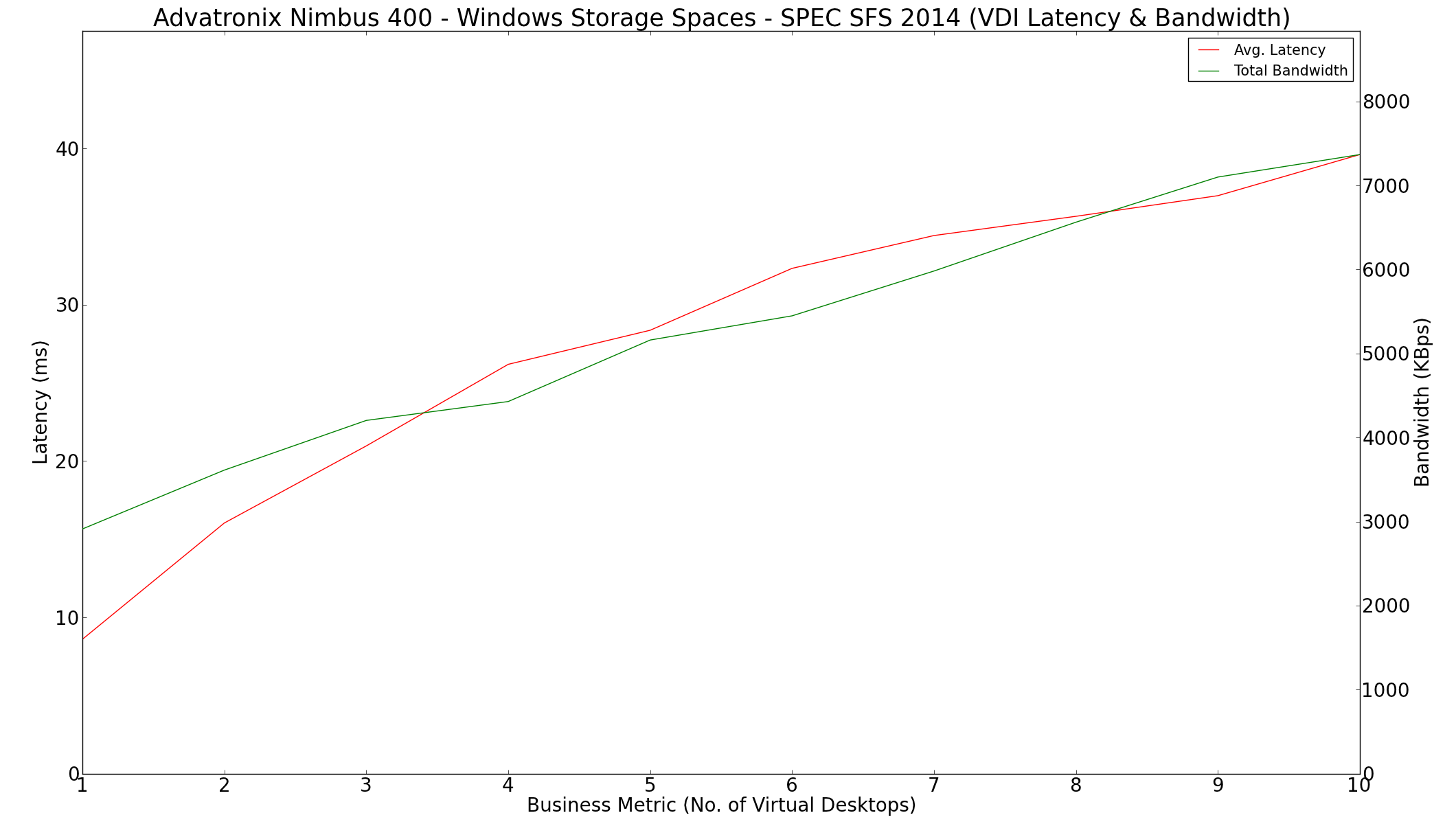
The report summary for the VDI workload is available here










18 Comments
View All Comments
jamyryals - Wednesday, August 12, 2015 - link
This CPU has the "AES New Instructions" which I think would offload most of the encryption costs. In practice, I don't have any experience with it to know either way.http://ark.intel.com/products/77982/Intel-Atom-Pro...
leexgx - Wednesday, August 12, 2015 - link
all the encryption would be done at very high speed with AES hardware in the CPU (assuming the encryption software uses AES like truecrypt does)WithoutWeakness - Wednesday, August 12, 2015 - link
Will you be doing a review of the Nimbus 2000? I've heard it's the fastest model yet!overzealot - Tuesday, August 18, 2015 - link
You're a server, Harry!toyotabedzrock - Wednesday, August 12, 2015 - link
The idle power usage seems very high. Is that while running Windows or Linux?ganeshts - Wednesday, August 12, 2015 - link
That was running Windows Server 2012 R2 with 4x SSDs in the drive bays.bobbozzo - Friday, August 14, 2015 - link
Hi,1. Is the PSU ATX, SFX, or some other standard form factor?
2. is there any dust filter in the front of the case?
Thanks!
DanNeely - Friday, August 14, 2015 - link
It's an ATX PSU. While not a filter per-se the door is a fine mesh that does block a fair amount of dust.